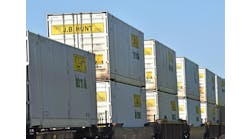It looks like the tantalizing prospect of flying cars, that staple of science fiction that has held sway over the public imagination since early in the last century, may finally enjoy an auspicious debut in 2025 when they are slated to take to the air over central Florida and then expand elsewhere in coming years.
We know this is real because the field has generated its own specialized jargon, now being termed the Urban Air Mobility (UAM) and Advanced Air Mobility (AAM) revolution.
Tavistock Development Company, creator of the planned community of Lake Nona in the greater Orlando area, plans to open its first active flying car service in two years. It will operate out of a facility called the Lilium Lake Nona Vertiport that is being built in conjunction with the City of Orlando and the German aerospace company Lilium, which has designed and is manufacturing the futuristic looking vehicles.
Lake Nona’s central location provides the opportunity to connect more than 20 million Floridians within a 186-mile radius, serving several major cities, including Orlando and Tampa, and possibly St. Petersburg, Tavistock reported.
The facility will be co-managed and operated by Lilium and the Spain-based Ferrovial group. That company’s Ferrovial Airports division operates 33 airports worldwide and will be responsible for providing investment, development and management expertise. It also operates other airport facilities in the United States., Australia, Chile and the United Kingdom.
In January, Ferrovial also announced that it has developed plans to build a network of 10 or more vertiports connecting cities across Florida, including Tampa, West Palm Beach, Fort Lauderdale, Naples and Miami. Some of these may be built on top of parking garages.
“Vertiports represent a step forward in achieving sustainable infrastructure for air mobility. At Ferrovial Airports, we are determined to provide sustainable mobility alternatives that will enable us to decongest road traffic and offer a unique passenger experience,” commented Luke Bugeja, CEO of Ferrovial Airports,
Kevin Cox, CEO of the Ferrovial vertiports division, said the company’s vision for future expansion of these air taxi services involves building vertiport facilities “where people want to go, and that will mainly be in congested areas, and they must be as close as possible to the first and last mile points” of passenger journeys.
Regarding the Lake Nona project, Lilium’s chief operating officer Remo Gerber noted, “Nearly all 20 million Floridians will live within 30 minutes of our vertiports and the 140 million annual visitors to the Sunshine State will have a high-speed option available to travel to their destinations.”
Unlike some of the earlier concepts for flying cars that required them to operate both on the road and in the air, the craft are only designed to fly from specially-designed and dedicated facilities in Lilium’s all-electric, vertical take-off and landing (eVTOL) aircraft, and are currently designed to seat four or six passengers, depending on how the interior is configured.
Governments and Investors Sit Up
The vertical takeoff obviates the need for runways, and because they are electric powered, they are seen as enormously reducing—if not completely eliminating—the generation of air pollution. Lilium also claims that its planes can fly 186 miles on a single, one-hour charge, and can complete a trip from Lake Nona to Tampa in less than a half-hour.
Lilium announced on June 26 that it had received the Federal Aviation Administration (FAA) G-1 Certification Basis necessary for type certificate validation of its Lilium Jet by the agency. “Receiving the FAA G-1 demonstrates the Lilium Jet’s path to global acceptance by aerospace regulators and the expected start of global operations in late 2025 for the Lilium jet,” Lilium CEO Klaus Roewe asserted.
The plans for this service appear to avoid the nightmare scenario of all sorts of ungainly vehicles crowding the congested and polluted skies over future cities that were depicted so vividly in popular modern sci-fi movies like “Blade Runner” and “The Fifth Element.”
On the other hand, the Vertiport design will service only a handful of these planes, which makes it unrealistic as an alternative to mass transit. Although it has been suggested that trips can be booked by passengers like they now do for Uber and Lyft rides, nothing has been said about how much a one-way trip will cost, which could turn out to be quite costly—and will certainly be more than taking a bus.
Another question about the Florida project that hasn’t been asked or answered yet is: How long will it be before Amazon discovers the Lake Nona project and attempts to take over the new service? Or the company attempts to co-opt the concept by creating its own eVTOL delivery service and facilities?
In recent decades, several highly speculative flying car projects (which were around a bit too long to be called fly-by-night) failed to come into existence beyond creating a series of mightily impressive visual promotional materials.
But the prospect of flying cars actually getting off the ground also is improving in Australia. The Council of Mayors of South East Queensland, which earlier this year completed a fact-finding tour in the U.S., has seen enough potential in the technology to enter into a partnership with WiskAero, a company producing four-seater flying taxis also utilizing eVTOL technology.
Brisbane-based attorneys Tom Young and Julie Brown of the global law firm of K&L Gates report that Australia’s aviation regulator, the Civil Aviation Safety Authority (CASA), has issued a road map for reshaping the regulation of Australia's airspace to accommodate the rapidly evolving aviation technology.
The attorneys explained that CASA currently is planning to roll out the necessary rules for flying taxis by 2025 and then expects to issue those regulations the following year, depending on foreign initial airworthiness certification and the commitment of eVTOL manufacturers to the Australian market.
In addition, in recent years, serious studies have been undertaken by major investment firms such as Morgan Stanley and the McKinsey & Company consulting firm regarding the potential of this market, which they have come to believe could provide enormous payoffs once they are up and running.




